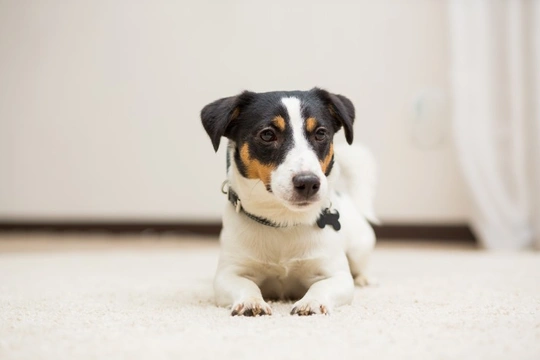
How and why to teach your dog to use a settle mat
One of the most useful and impressive tricks a dog can know is to settle down in any given place. For older dogs this often comes naturally, but to those prone to running off or those who love to explore new places and say hello to new people, the ability to settle down on command is extremely useful. In order to learn this technique, most dog owners use the ‘settle mat’. This is a small piece of cloth that works as both a comforter and a visual indicator that it is time to lie down and wait. Some owners may use clothing for this- I know one dog who will go to ‘bed’ on any given item of clothing you ask her to, which is extremely useful at the pub, café or park. Simply lay your coat, cardigan or scarf on the floor, say ‘in your bed’ and gesture to it, and she curls up to go to sleep. Amazing! All dogs can learn a version of this, although for most dogs a single item that signifies ‘settle’ is easier to understand.
Why should you teach your dog to use a settle mat?
Having a dog that can reliably curl up under a table at a dinner party, café or pub is a great boon, and makes your lives together so much easier and more enjoyable. Also, dogs that are nervous of new places can use a settle mat as a comforting positive experience.
What can you use as a settle mat?
You can use anything as a settle mat, but it’s best if it’s big enough for your dog to lie on, and small enough that you can easily carry it to places. If you’re the kind of person who forgets things, buy several of them at the same time so that you have one for the car, one for your bag, and one for the pram. If you can find something small enough to fit in a coat pocket, fantastic. Personally, I use a small square of microfibre towel as it folds small and wicks any moisture away from the fur. Fleece also works well.
How should you teach your dog to use a settle mat?
The first step in teaching your dog to use a settle mat is to create a positive association with the mat. Do this by giving your dog a treat whenever they look at or step on the mat. If you look at the mat as if it is the most interesting thing in the world then place it on the floor, your dog will likely go over to the mat and show an interest too. Use the command ‘settle’ and give them treats whenever they make contact with the mat. If they get bored and wander off, take the mat away and stop the game. Next time, try to take a break before they get bored. You can train them to come over to the mat by throwing a treat for them to chase, then rewarding them again once they return to the mat, using the command ‘settle’ as they make contact with the mat.
Once your dog wags their tail as soon as they see the mat, and comes over to stand on it, it’s time for the next step. Ask your dog to lie down on the mat. Give them treats periodically for remaining lying down on the mat. Before they get bored remove them from the mat by giving a releasing command (I use ‘go free’) followed by a thrown treat for them to chase. Take the mat up.
The next time you put the mat down, ask them to settle, and use your hand to guide them into a lying down position. If they aren’t sure what to do, you can use your command to lie down as well. Again, give them treats every few seconds they remain lying down, but vary the frequency of the treats. Over time, you want to build up how long they wait for a treat before getting bored and walking away. After all, you don’t want to have to give them a treat every few seconds when you’re in the café!
Once they’ve mastered waiting for their treats, start to build up the distractions. Put the mat down and ask them to settle. Reward them for coming over to the mat and lying down to wait. Ask somebody to walk past the mat, and treat them for remaining still and waiting on the mat. As they get better at this you can move around yourself, have something thrown past them, or release other dogs into the mix. Don’t be surprised if your dog finds this hard at first, just build up the distractions slowly and practise, practise, practise.
Now begin to vary where your dog is asked to settle. Take the mat with you on a walk, and put it down by a bench. Reward them well for coming over to the mat. Remember, new places will likely set your dog back a few steps, so expect to have to give them lots of treats very frequently at first. Try parks, walks, pubs, and friend’s houses until your dog will reliably settle for long periods even without many treats!



